Consumption of bituminous primer per 1 m2
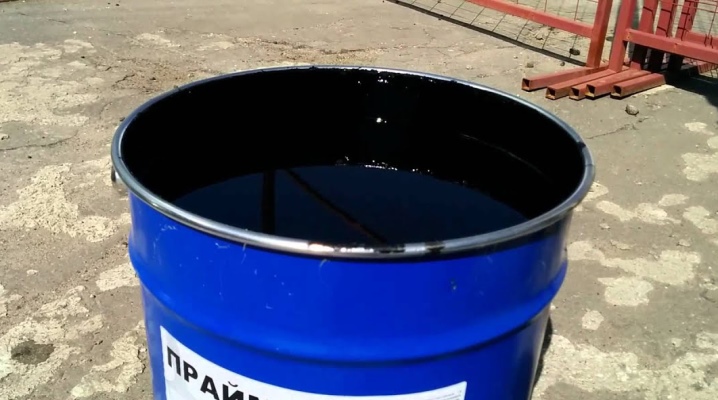
Bituminous primer is a type of building materials based on pure bitumen, which would not show all its advantages to the fullest. To reduce the consumption of bitumen in terms of volume and weight (per square meter of surface), additives are used to facilitate its application.
What should be considered?
Although suppliers of bitumen mixes allow the use of a bitumen primer at sub-zero temperatures and in extreme heat conditions, the consumer must follow some specific restrictions when covering different types and varieties of work surfaces with bitumen mixes. If these rules are ignored, the quality level and the life of the primer will be significantly reduced. Before coating with the composition, the surface and the material itself are heated, leaving the container with the primer in a warm room.
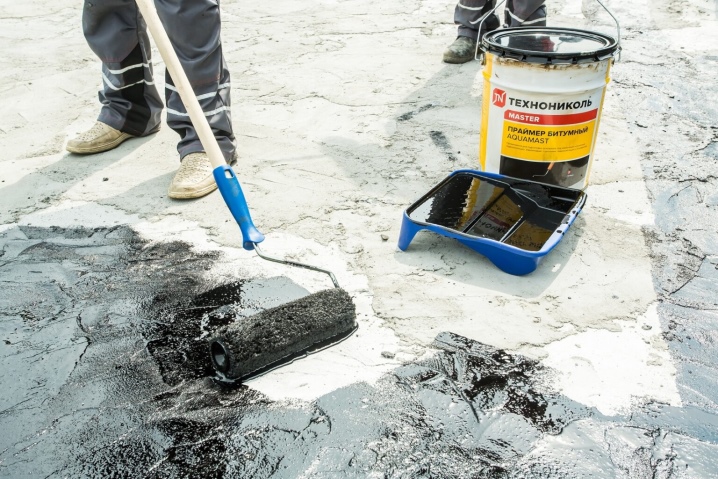
When covering the roofing in the cold, the consumption rate of the primer will increase, and its hardening will slow down. Most manufacturers advise against coating any surfaces with a primer whose temperature has dropped below +10. The primer achieves the best properties in terms of drying and the formation of a reliable film on the surface at room temperature.
If the primer composition is nevertheless applied in winter, then the surface is cleared of snow and ice, and it is also worth waiting for it to completely dry in the wind.

When used in a completely enclosed environment, they primarily provide a stable and powerful supply of fresh air. Shake the primer thoroughly before applying it. With a significant degree of density of the composition (concentrated mixture), an additional amount of solvent is poured into the primer composition until the mixture becomes more liquid and homogeneous.
The job of coating any surface with primer requires work clothing, protective gloves and goggles. The worker must be well protected from contact with the composition on the skin and mucous membranes. The primer is applied with brushes or brushes, rollers or mechanical sprayers. The way the composition is applied will depend on its specific consumption.
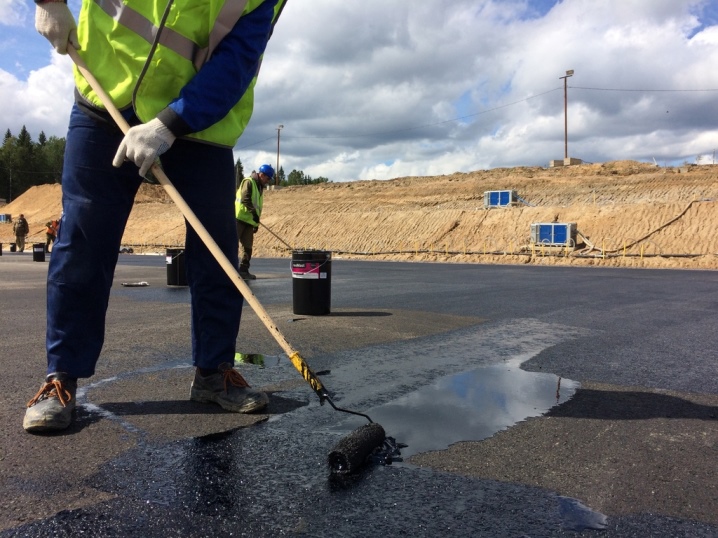
Before purchasing the required amount of primer composition, calculate how much it will be required to solve the current issue of finishing the premises and / or the roof.
Data on the composition and consumption rate are indicated on the can, bottle or sealed plastic bucket in which this building material is sold. In the absence of information about the recommended coating thickness and consumption rate, the consumer will calculate the minimum allowable consumption rate of the substance, below which the coating quality will seriously suffer. The primer contains 30-70% volatile hydrocarbon compounds that evaporate quickly at room temperature.
The primer is also an adhesive substance: it allows, until the coating is completely dry, to stick, for example, a roll of decorative film made from wood and plastic processing products. A vertical surface will not allow a thick layer of primer building material to be applied: streaks can form on the wall or support, this problem can be solved by using a multi-layer coating of much thinner layers. Pouring the primer onto the wall and then spreading it out - as it happens on the floor, roof or landing - is not acceptable.

Consumption during the application of each subsequent layer is reduced - due to the smoothing of roughness and small irregularities. The smoother the layer - it approaches a perfectly smooth surface - the less building material will be required to hide all the imperfections of your walls, floor, platform or ceiling.
Before applying the first coat, make sure that the surface, such as concrete or wood, is watertight from the underlying layers, which can absorb moisture. This can be easily verified by placing, for example, a plastic wrap on the subfloor. If moisture condensation has formed on its lower side facing the surface, then this surface is not suitable for applying a bitumen primer and similar liquid materials, since the applied layer will soon peel off, allowing all the evaporating moisture to pass through itself.
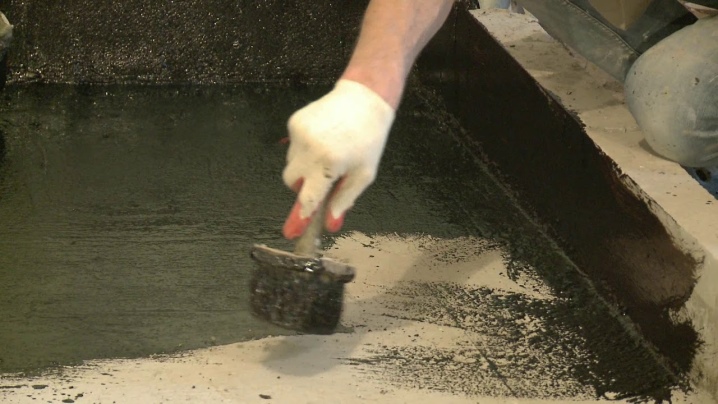
If it is impossible to correct the situation with the release of this surface of water vapor, then use other compounds, the layer of which does not deteriorate from moisture - and will reliably protect the primer layer from contact with it. If we are talking about covering a concrete or wooden attic floor, then snow, water is removed from it, then it is thoroughly dried.
If necessary, the primer is mixed with bitumen mastic, then additional organic solvents are added. Butt seams, on which the temperature can drop significantly, are additionally insulated with fiberglass. After applying the first layer of primer on a vertical surface, it is allowed to dry (up to a day), then the vertical surface is covered a second time.
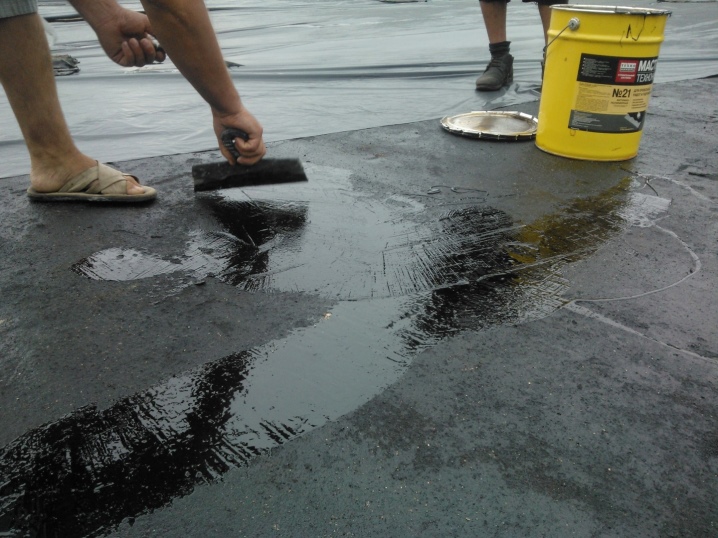
If the tools (for example, the bearing frame of the roller) are smeared with a layer of primer during operation, then "white spirit" is used to remove these residues.
In case of increased fire hazard, do not use bituminous components, including primer - they are highly flammable and supportive reagents. Most solvents are also easily ignited by even the smallest flame. In other cases, bituminous building materials are a good solution with low cash costs and moisture insulating properties.
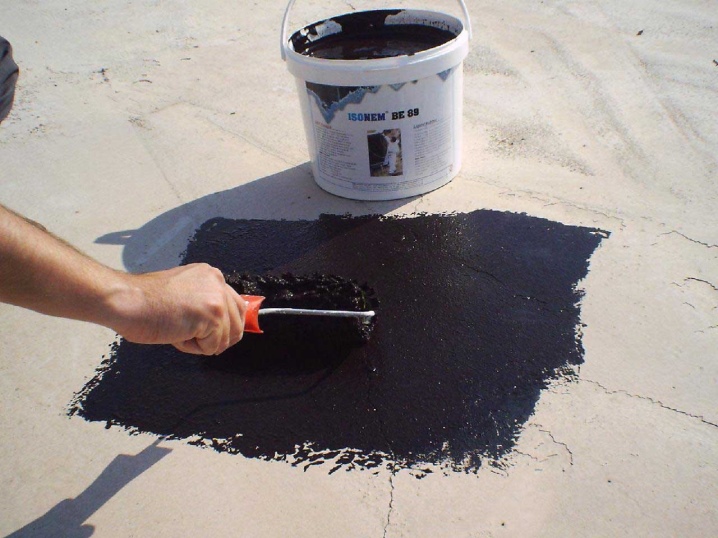
Norms
To prevent the dried primer from chipping off the coated surface, the concrete, cement or wood coating must not release moisture. Bituminous mastic is applied under the primer. If the surface is initially dry and not problematic, a coat of primer can be applied immediately. The supplier indicates the recommended range of values for consumption per square meter - the user will quickly navigate in a specific situation. The fact is that a bituminous primer, without which a high-quality coating is impossible, contains up to 7/10 volatile solvents and has some so-called. percentage of drying. The bitumen primer consumption is calculated independently.
If you apply too thin a layer, then it will not last long. Its cracking, fading, peeling is possible even without the release of moisture by the surface itself. If you go over the amount, the surface can also crack: everything that turns out to be superfluous will simply fall off over time.
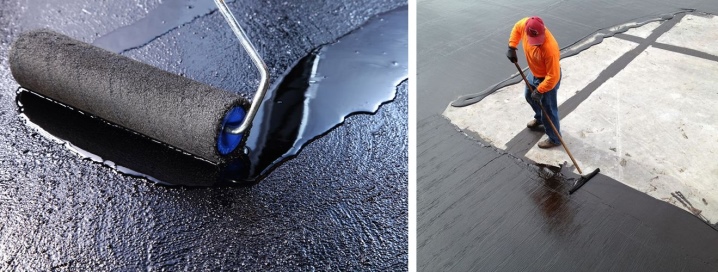
The use of hot compounds - mastic and primer - will not allow the layer to settle sharply after drying and cooling: its thickness and volume will remain unnoticed, since the solvents partially polymerize in the drying bitumen.
Any primer provides an average consumption rate of about 300 g / m2 on a cold surface. Some manufacturers supplying bitumen primer in 50-liter tanks provide, for example, covering the contents of one such tank up to 100 m2 of surfaces in a house or non-residential building. For a 20 liter tank, this is up to 40 m2 of surface. It is easy to calculate that 1 dm3 (1 l) of the primer is enough to cover 2 m2 of surfaces - the increased rate provides for rough concrete, cement, unpolished wood or chipboard, where this value can double.
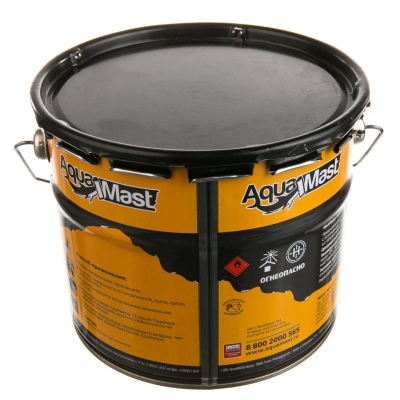
When treating a foundation (without screed), approximately 3 kg of thick substance per square meter may be required. For roof slabs and coverings, this value can increase up to 6 kg / m2. If you want to make, for example, a roofing material substitute (cardboard and bitumen, without mineral bedding), then the consumption rate will decrease to 2 kg / m2. In this case, the concrete support or floor will be more durable - thanks to high-quality waterproofing. Sliced, sanded wood may require only 300 ml per 1 sq. m. surface; the same amount is required for the second (and also the third) layers of the primer composition, applied to almost any surface.
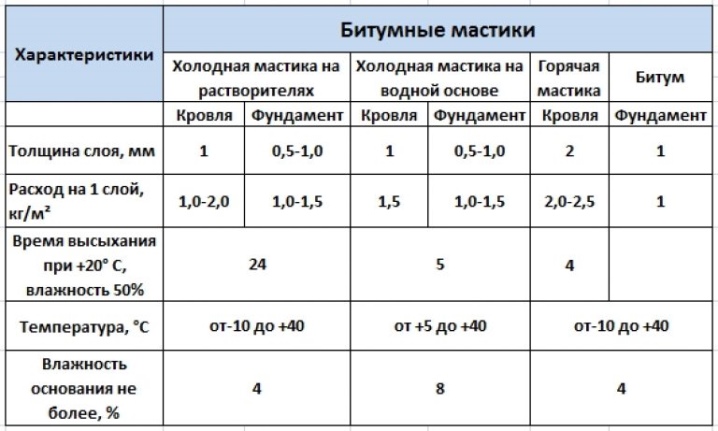
Porous surfaces, for example, a foam block without external finishing (plaster, wood flooring) will require up to 6 kg / m2. The fact is that any fluid, liquid-like composition easily seeps through the upper layers of air bubbles, the shell of which is a building mixture used in the manufacture of foam blocks. Uneven and porous surfaces are covered with a wide brush (which can be found in the nearest building supermarkets). For smooth - polished wood, steel floors - a roller is suitable. Metal surfaces, due to their smoothness, will require only 200 g (or 200 ml) of the primer composition. A flat concrete roof with powder (including roofing felt) may require 900 g or 1 kg per 1 m2.
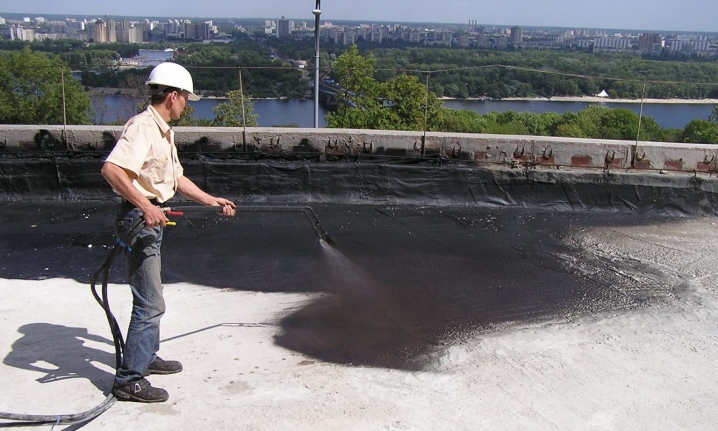
Payment
It is easy to calculate the consumption rate per square meter.
- All available surfaces are measured.
- The length of each is multiplied by its width.
- The resulting values are added.
- The amount of bituminous primer available is divided by the result.
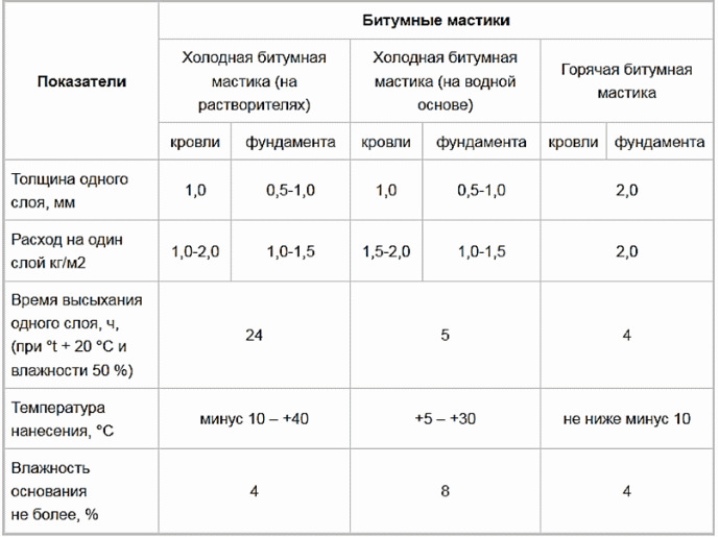
If the general norms indicated on the container label are far from the calculated ones, the consumer buys the required amount of primer in addition. Or, at the initial stage, the user works with what he has - and after the end of the existing building material, he acquires the amount that was not enough for him to go through the entire stage of work. The exact figure for the consumption of the bituminous primer will allow you to calculate its amount upon purchase, for this you will need to find the surface area for which waterproofing will be made and divide it by the consumption (per square meter). If the primer has not yet been purchased, then the total area of a specific surface, for example, slate, is multiplied by the average recommended standard of 0.3 kg / m2. For example, a 30 m2 slate roof will require 9 kg of primer.
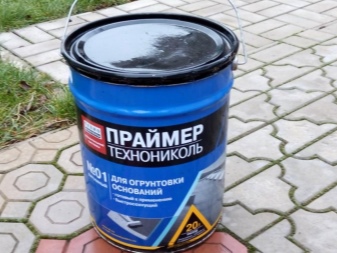
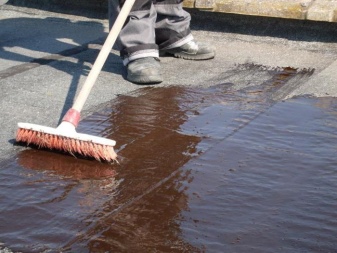
The application of a bituminous primer in the video below.













The comment was sent successfully.